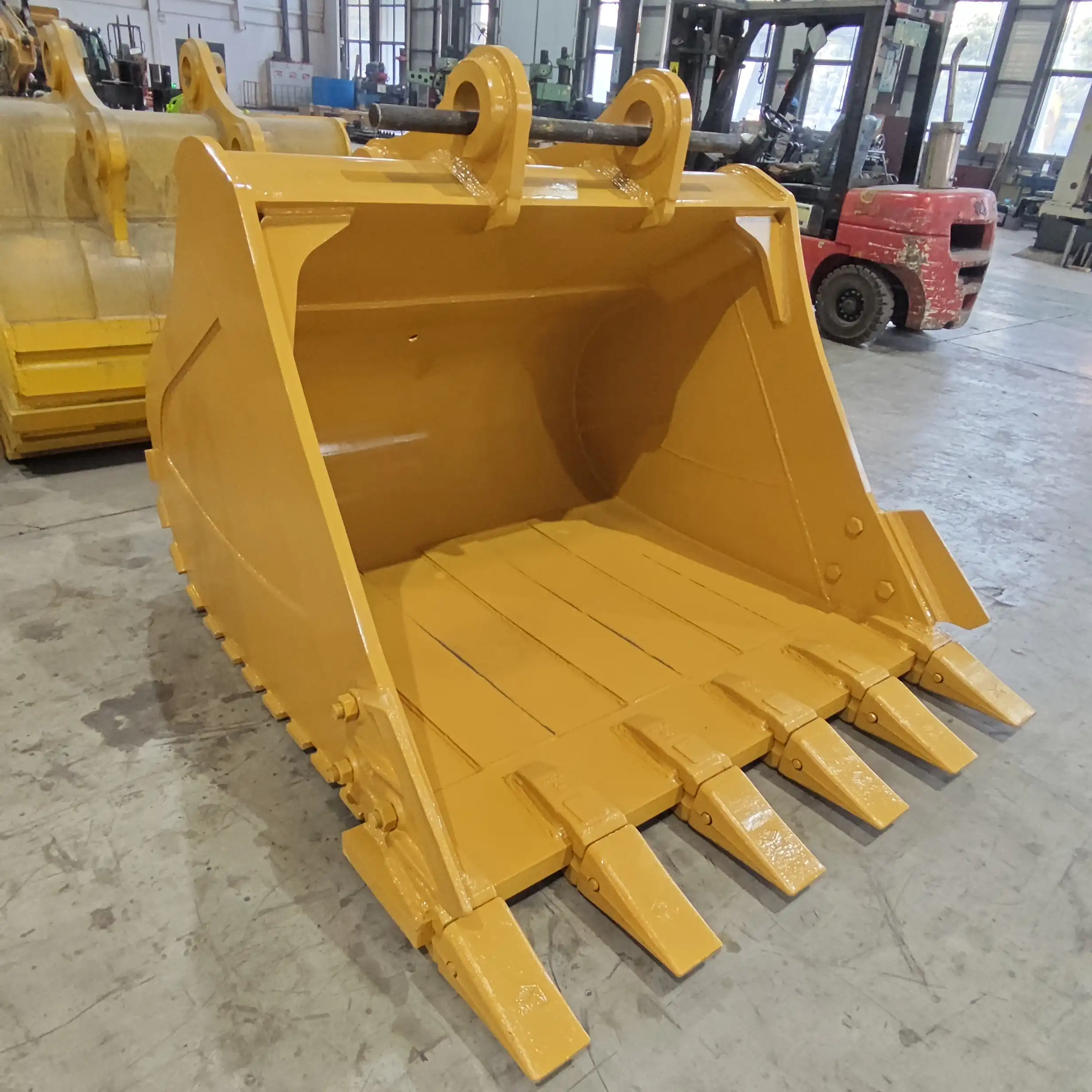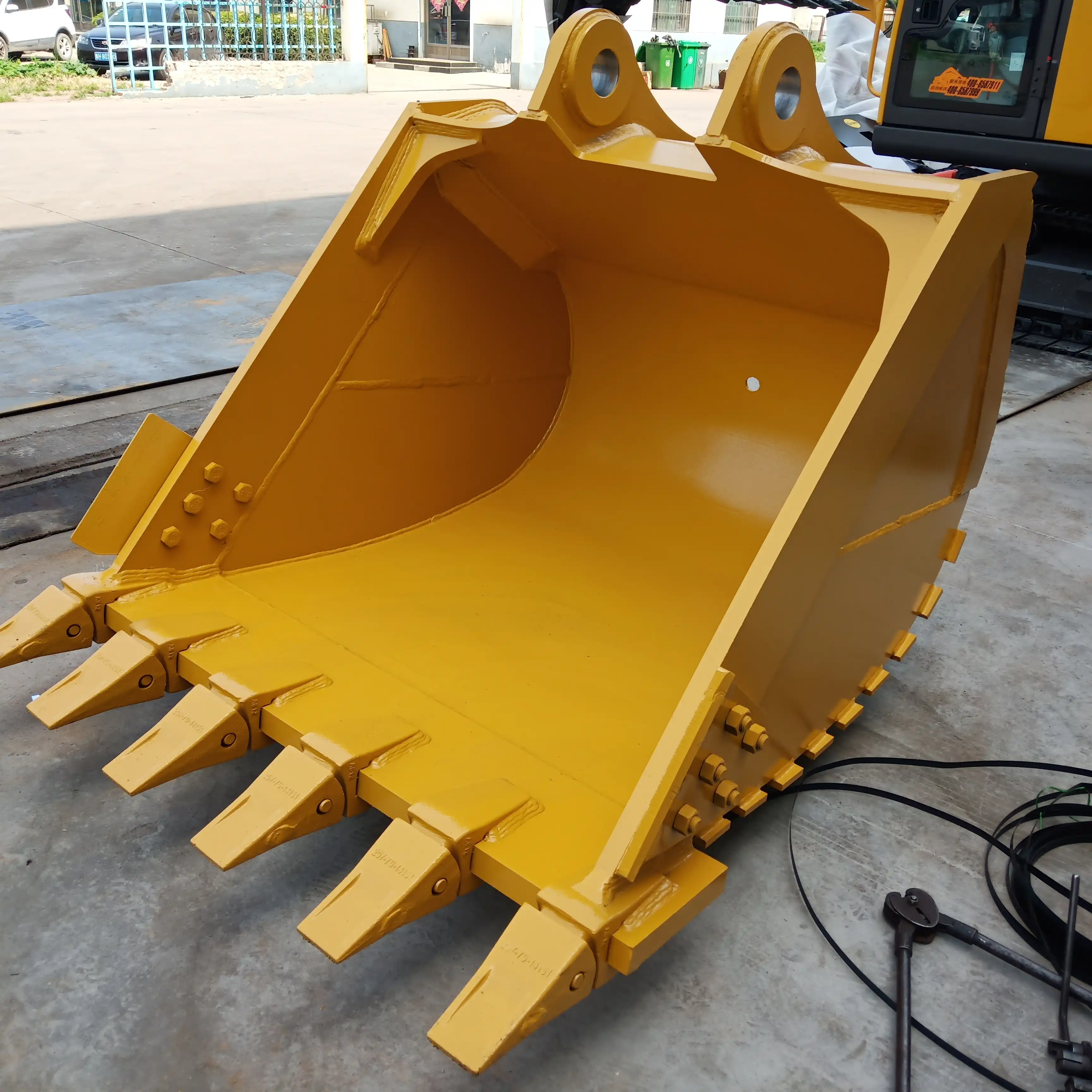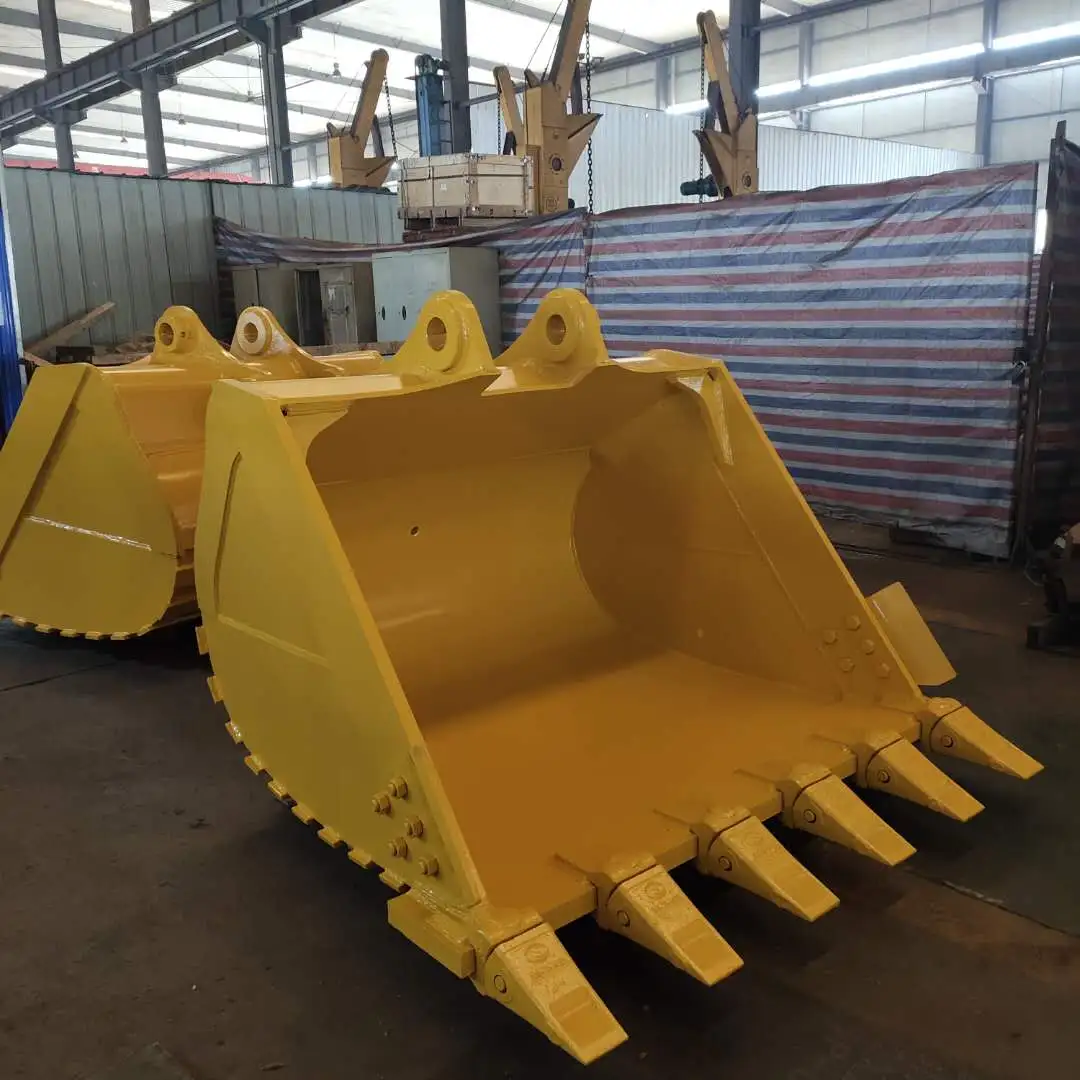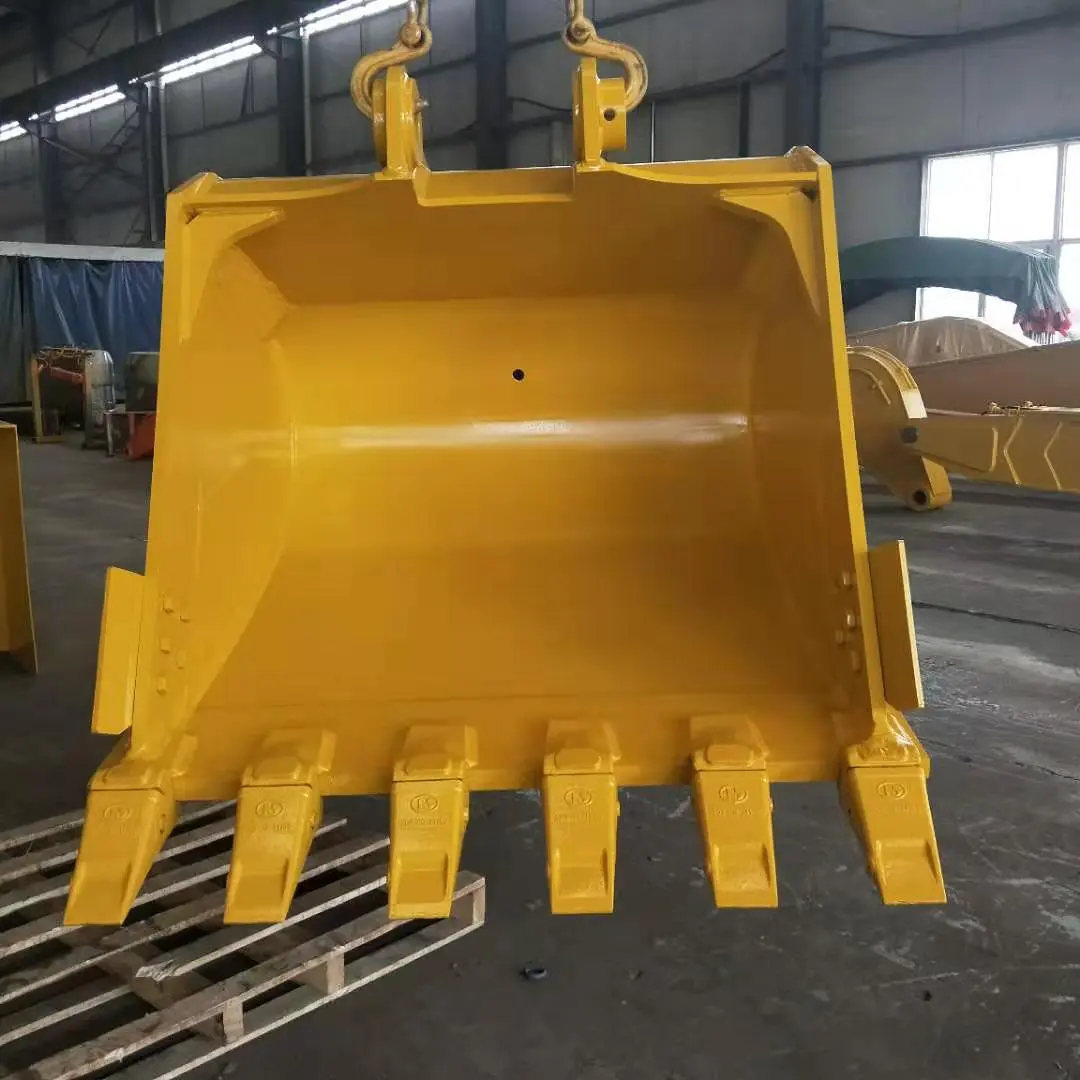How long do excavator buckets last?
Excavator buckets typically last between 3,000 to 10,000 operating hours, depending on several critical factors. For standard construction projects with moderate use, you can expect your bucket to deliver reliable performance for about 5,000 hours before requiring significant repairs or replacement. However, in severe applications like rock excavation, mining, or demolition work, the lifespan might be limited to 2,000-3,000 hours. Conversely, when used primarily in soft soil conditions with proper maintenance, some high-quality buckets can extend their useful life to 12,000+ hours.
The variation in lifespan comes down to multiple factors working together. Material quality makes an enormous difference; buckets fabricated from high-strength wear-resistant steel with proper heat treatment significantly outlast those made from standard steel. Your operating environment plays an equally important role, as abrasive materials like granite and quartz accelerate wear dramatically compared to working in clay or loam. Perhaps most crucially, maintenance practices can either maximize or severely diminish your bucket's longevity. Regular inspections, proper storage, timely repairs, and appropriate application selection all contribute to extending bucket working life.
Material and Construction

The foundation of any durable excavator bucket begins with its materials and construction methods. These factors form the baseline of how long the bucket will last before showing signs of serious wear.
High-Strength Steel Selection
The material choice for excavator buckets significantly impacts their lifespan. Premium buckets utilize high-strength wear-resistant steel with Brinell hardness ratings between 400-500 HB. This specialized steel contains precisely calibrated amounts of carbon, manganese, and other alloys that dramatically increase abrasion resistance compared to standard structural steel.
Modern bucket manufacturing often incorporates differential hardening techniques, where cutting edges and high-wear zones receive specialized heat treatment while maintaining sufficient flexibility in the structural components. This balance prevents catastrophic cracking while still providing extended wear life in critical areas.
Material thickness also plays a crucial role; buckets designed for severe-duty applications typically feature steel plating between 25-50mm thick, depending on the bucket size and intended application. This additional material provides a wear allowance that directly translates to extended service life before replacement becomes necessary.
Reinforcement and Wear Components
Strategic reinforcement fundamentally extends excavator bucket attachments durability. Modern designs incorporate carefully positioned wear strips, side cutters, and corner protectors at high-stress points. These reinforcements distribute load forces more evenly across the entire structure, preventing premature failure at weak points.
The welding quality and technique used during manufacturing dramatically influence longevity. Proper weld penetration, appropriate filler materials, and post-weld heat treatment prevent stress concentrations that could otherwise lead to crack initiation. Premium buckets feature continuous welds with gradual transitions between components rather than spot welds that create potential failure points.
Replaceable wear components represent another crucial aspect of bucket design philosophy. Teeth systems, side cutters, and wear plates designed for easy field replacement allow operators to refresh high-wear areas without replacing the entire bucket structure. This modular approach significantly extends the functional lifespan of the base bucket while optimizing maintenance costs.
Operating Conditions

The environment and manner in which an excavator bucket is used arguably have the greatest impact on its ultimate lifespan. Even the most premium bucket will experience accelerated wear when used improperly or in extremely harsh conditions.
Material Type and Abrasiveness
The material being excavated directly correlates with bucket wear rates. Working primarily in soft, loamy soil causes minimal abrasion, potentially extending bucket life by 40-50% beyond manufacturer estimates. Conversely, highly abrasive materials containing quartz, granite, or other hard minerals can reduce expected lifespan by up to 60%.
The moisture content of excavated materials also significantly impacts wear rates. Dry, fine-particulate materials cause accelerated abrasion as they flow across metal surfaces. Paradoxically, extremely wet conditions with high sediment content create a slurry effect that can erode metal surfaces through microscopic gouging actions.
Temperature extremes represent another environmental factor affecting bucket durability. Extremely cold conditions reduce the impact resistance of steel, making it more susceptible to cracking. Meanwhile, high-temperature environments, such as certain mining applications, can alter the material properties of the steel over time, potentially reducing its wear resistance.
Operator Technique and Usage Patterns
Operator skill profoundly influences bucket longevity. Experienced operators maintain appropriate attack angles, minimize bucket curling against resistant materials, and avoid using the bucket for non-excavation tasks like hammering or prying. These practices prevent concentrated stress that accelerates wear or causes catastrophic failure.
Matching bucket selection to the specific task represents another aspect of proper operation. Using a general-purpose bucket for rock excavation or a rock bucket for precision grading works against the equipment's design parameters, accelerating wear and potentially causing structural damage. Well-managed operations maintain a variety of buckets suited for different applications rather than compromising with a single option.
The duty cycle, how intensively and continuously the bucket is used, also impacts lifespan. Operations running 24/7 in demanding conditions might need to replace buckets three times more frequently than those using equipment intermittently or in less demanding applications. This factor must be considered when evaluating manufacturer lifespan claims.
Maintenance and Repairs

Proper maintenance routines can effectively double the usable lifespan of an excavator bucket, while neglect can cut expected life in half. Implementing strategic maintenance practices represents one of the most cost-effective ways to maximize your equipment investment.
Regular Inspection Protocols
Implementing systematic inspection schedules significantly extends bucket service life. Daily visual inspections should focus on identifying fresh cracks, unusual wear patterns, or loose components before they develop into major failures. Weekly, more detailed inspections should include checking all wear plates, teeth systems, and mounting components.
During inspections, particular attention should focus on high-stress areas, including the mounting system (pins and bushings), the transition between the bucket body and adaptors, corner reinforcements, and welded joints. Early detection of problems in these areas allows for simple repairs rather than complete replacements.
Documentation of wear progression provides invaluable data for maintenance planning. Measuring and recording key dimensions like cutting edge thickness, side cutter profiles, and overall bucket geometry creates a predictable wear timeline. This information enables proactive rather than reactive maintenance scheduling, minimizing operational disruptions.
Tooth and Wear Component Management
The teeth system requires particularly vigilant maintenance as it experiences the most direct contact with abrasive materials. Implementing a regular tooth rotation schedule equalizes wear across all components. Most operations benefit from examining teeth daily and rotating or replacing them based on wear rather than fixed time intervals.
Tooth retention systems require equal attention; loose pins or deteriorating locking mechanisms can result in tooth loss during operation. This not only reduces excavation efficiency but can damage the adaptor systems that secure the teeth to the bucket. Regular torque checking of all fasteners prevents these costly failures.
Side cutters and wear plates should be replaced when approximately 50-70% worn rather than waiting for complete deterioration. This approach preserves the structural integrity of the base bucket by preventing wear from reaching the primary bucket structure. The modest additional cost of more frequent wear component replacement significantly extends the overall bucket lifespan.
FAQ
①How can I tell when my excavator bucket needs replacement?
Your excavator bucket needs replacement when: the main structure shows cracking that cannot be effectively repaired; wear has progressed beyond the point where hardfacing or rebuilding is economical (typically when the main body has lost more than 30% of its original thickness); or when the mounting system has excessive wear that compromises attachment security. Regular thickness measurements at high-wear areas provide objective data for replacement decisions.
②What's the difference between hard facing and replacing wear components?
Hardfacing applies specialized wear-resistant welding material directly to worn areas, rebuilding dimensions while potentially increasing abrasion resistance. It's ideal for distributed wear patterns. Replacing wear components involves changing pre-fabricated parts designed for high-wear applications. This approach works best for concentrated wear areas with standardized components. Most effective maintenance programs utilize both strategies – replaceable components for standardized wear points and hardfacing for custom areas experiencing unexpectedly high wear.
③Is it worth investing in premium excavator buckets?
Premium excavator buckets typically deliver 30-50% longer service life compared to economy options through superior materials, better welding techniques, and more sophisticated design. For operations running equipment consistently or in demanding conditions, the higher initial investment typically generates a positive return through extended service intervals and reduced downtime. Calculate your cost-per-hour rather than focusing solely on purchase price.
About Tiannuo Construction Machinery

Bucket lifespan represents a complex interplay between material quality, operating conditions, and maintenance practices. While initial material and construction quality establish the baseline potential, actual service life depends heavily on application appropriateness and maintenance diligence. Companies that implement comprehensive bucket management programs, including regular inspections, appropriate application matching, and timely maintenance interventions, consistently achieve 30-50% longer service life than industry averages.
When selecting your next excavator bucket, consider the total lifecycle cost rather than just the initial purchase price. Premium buckets manufactured with high-strength wear-resistant steel, proper reinforcement, and application-specific design features typically deliver superior return on investment through extended service life and reduced downtime. Tiannuo Construction Machinery specializes in producing exactly these types of high-performance buckets with capacities ranging from 0.1 to 5.0 cubic meters, suitable for various excavator models through either pin-on or quick coupler attachment systems.
For expert advice on selecting the optimal bucket for your specific application or to discuss custom bucket solutions that maximize longevity while meeting your operational requirements, contact us at arm@stnd-machinery.com. Our team can help you implement the material selection, design features, and maintenance practices that will maximize your equipment investment.
References

Journal of Construction Engineering and Materials (2023): "Lifecycle Analysis of Heavy Equipment Attachments in Construction Applications"
International Mining Equipment Review (2024): "Modern Materials in Excavator Attachment Manufacturing"
Heavy Equipment Maintenance Manual, 7th Edition (2023): "Preventative Maintenance Protocols for Hydraulic Excavator Attachments"
Construction Equipment Durability Assessment (2024): "Comparative Analysis of Wear Patterns in Earth-Moving Equipment"
Industrial Wear Prevention Quarterly (2023): "Advanced Surface Treatment Technologies for Extended Service Life in Excavation Equipment"
About Author: Arm
Arm is a leading expert in the field of specialized construction and railway maintenance equipment, working at Tiannuo Company.

